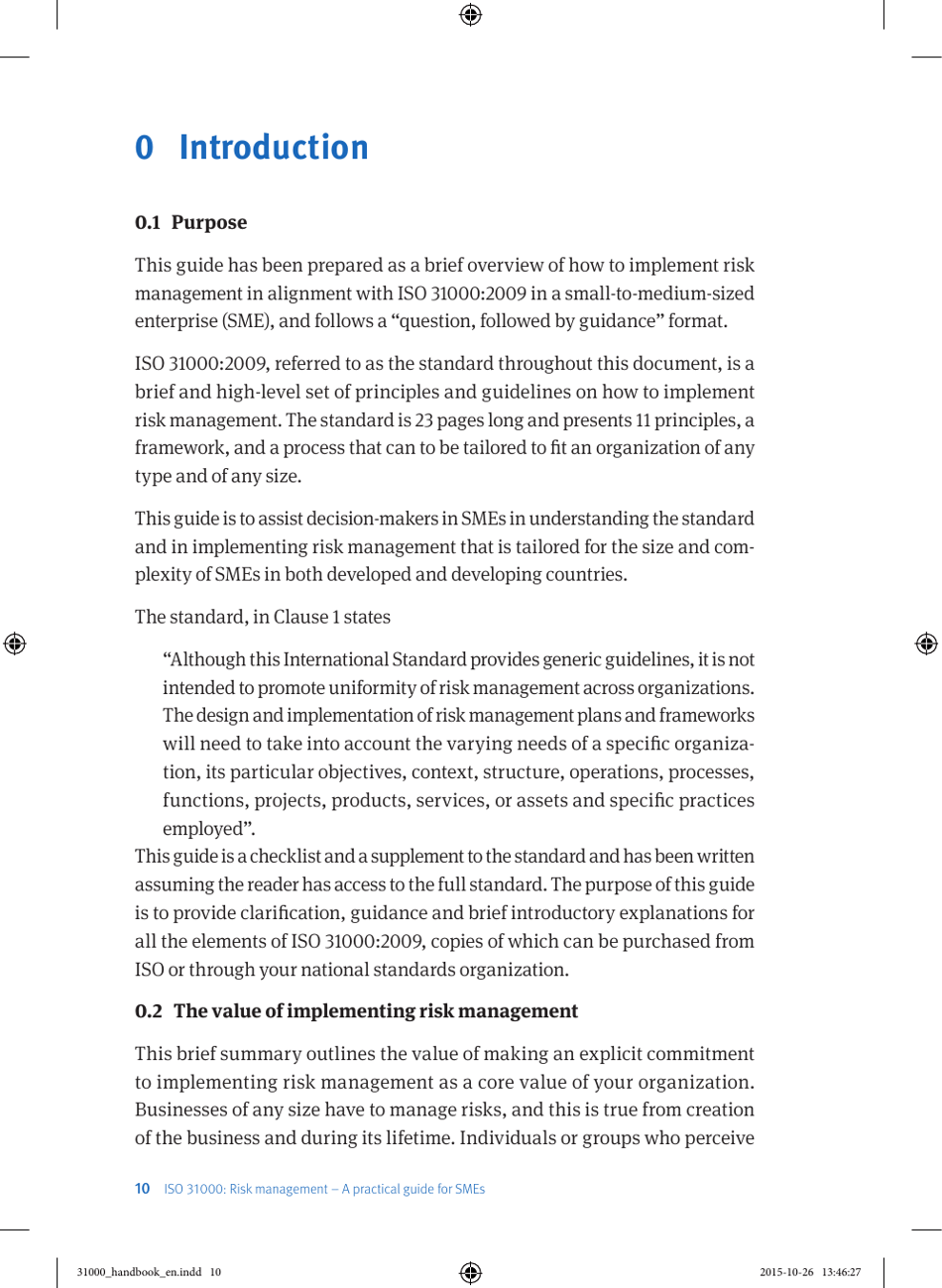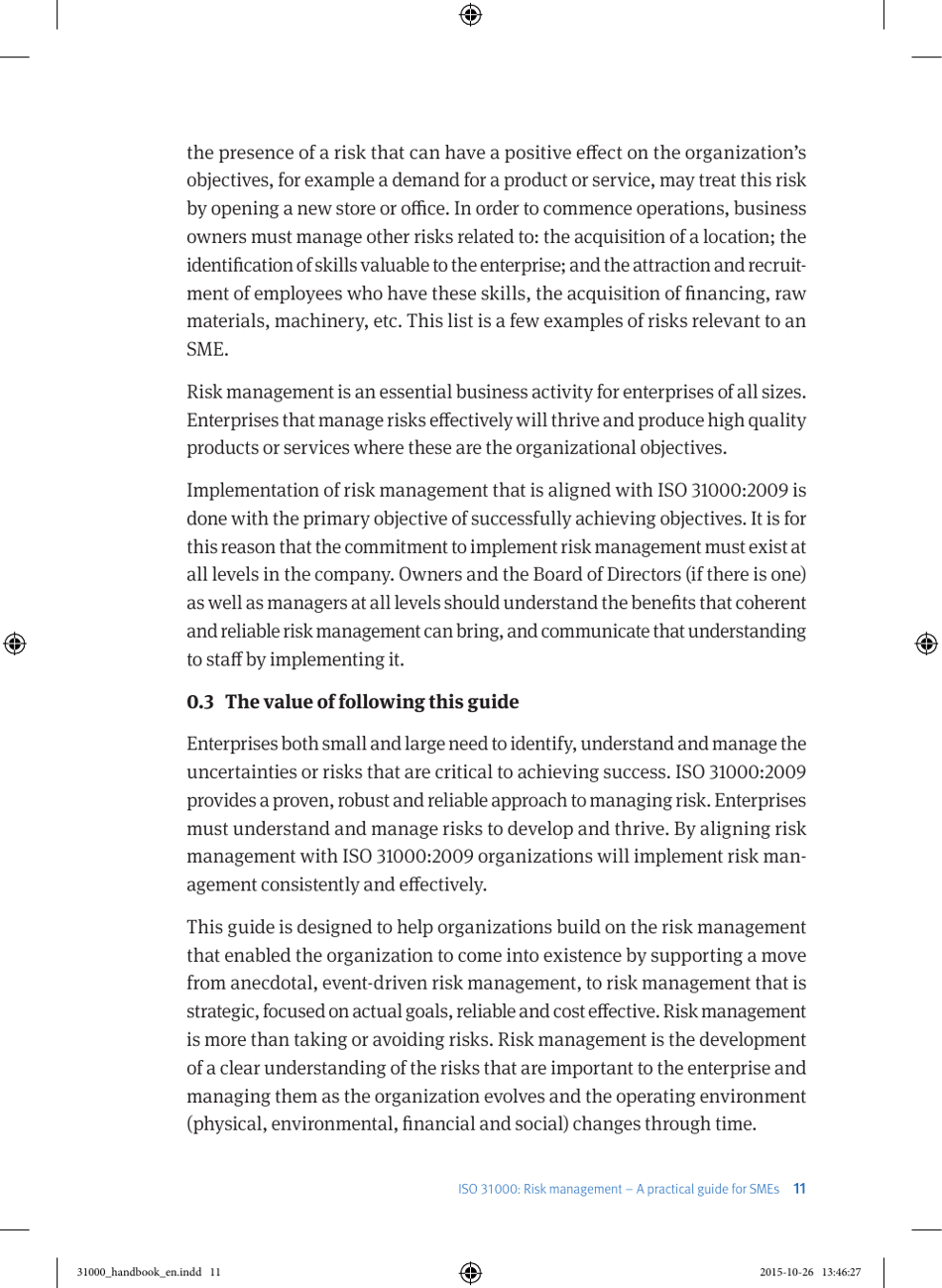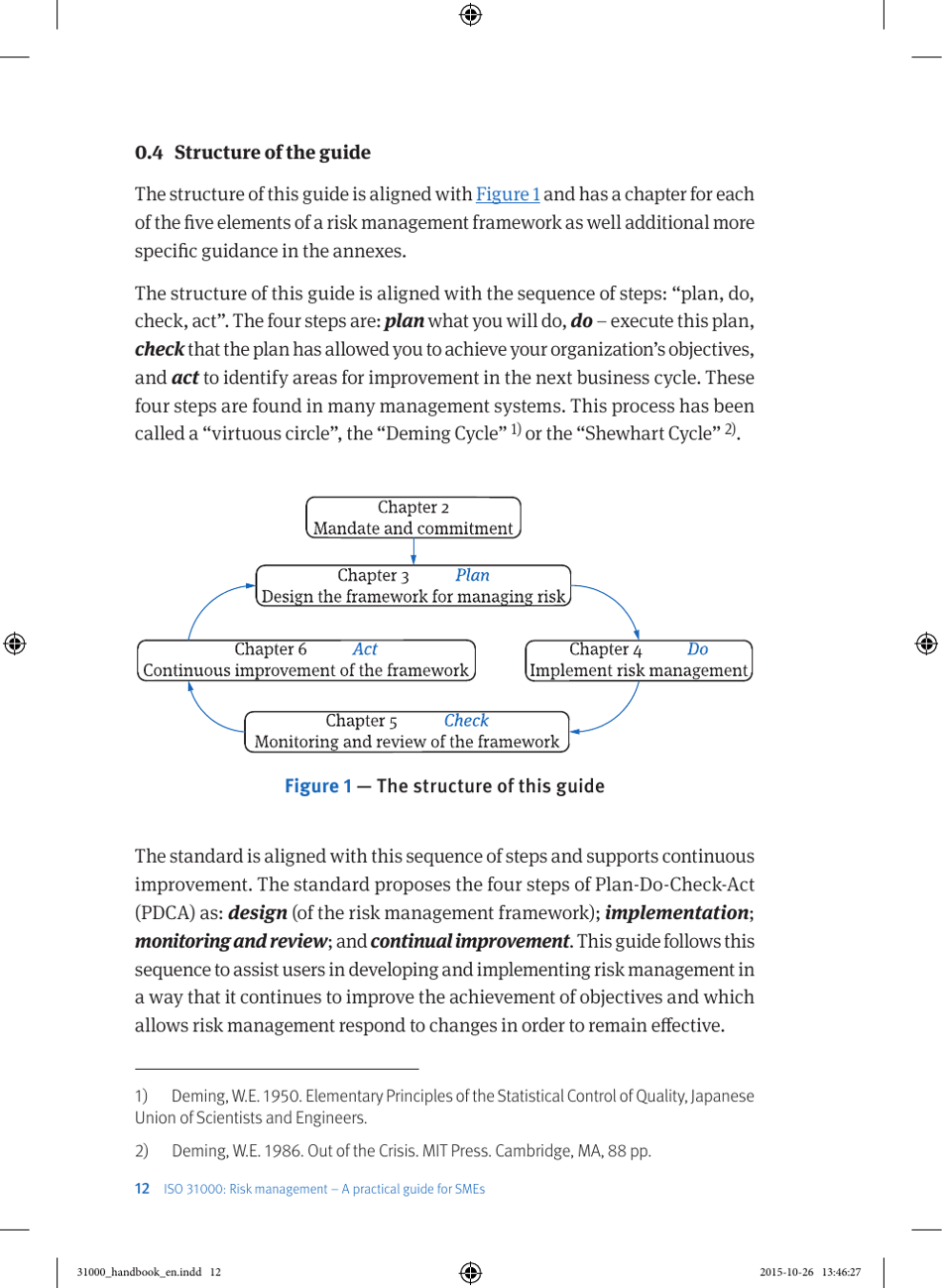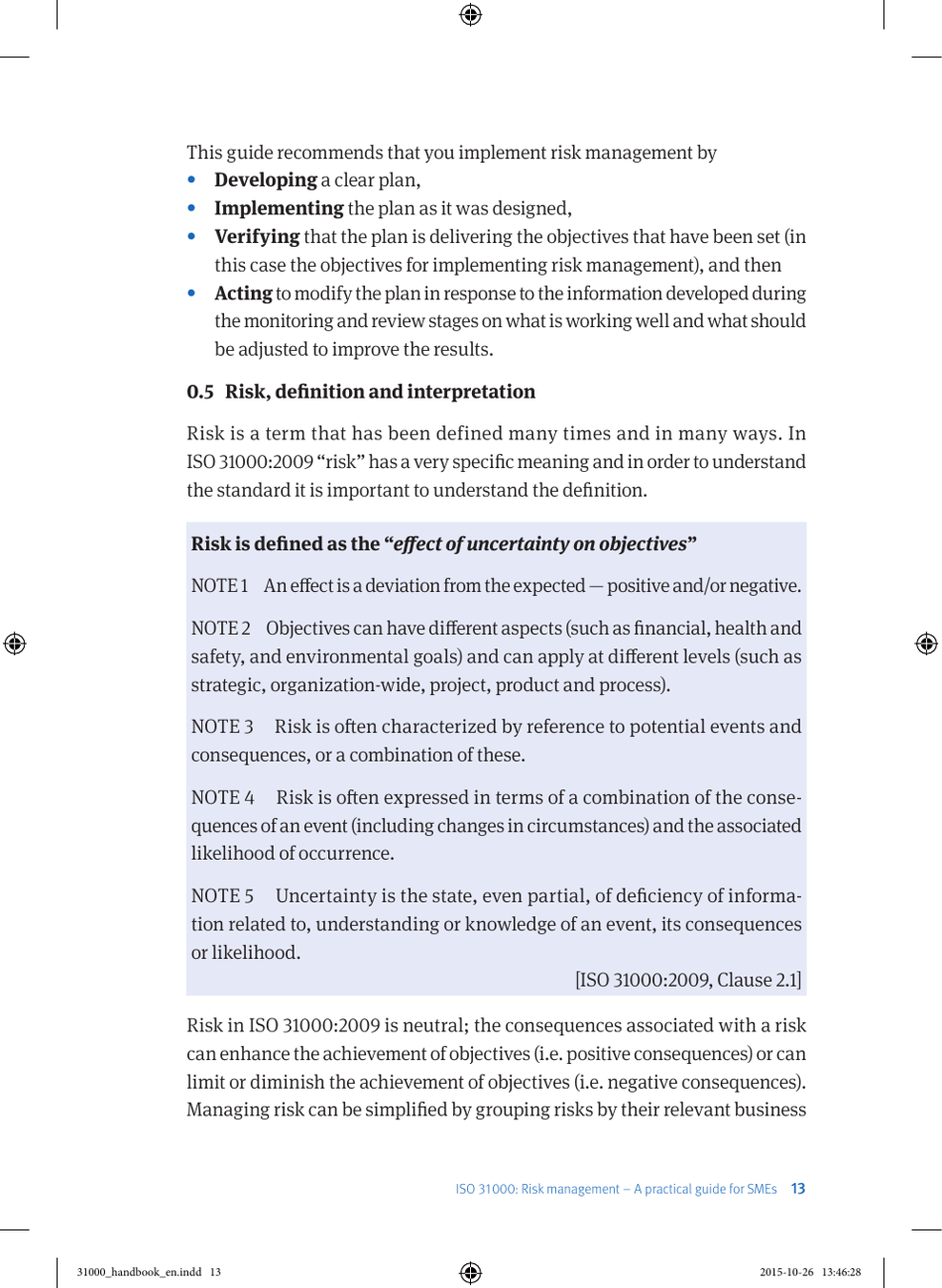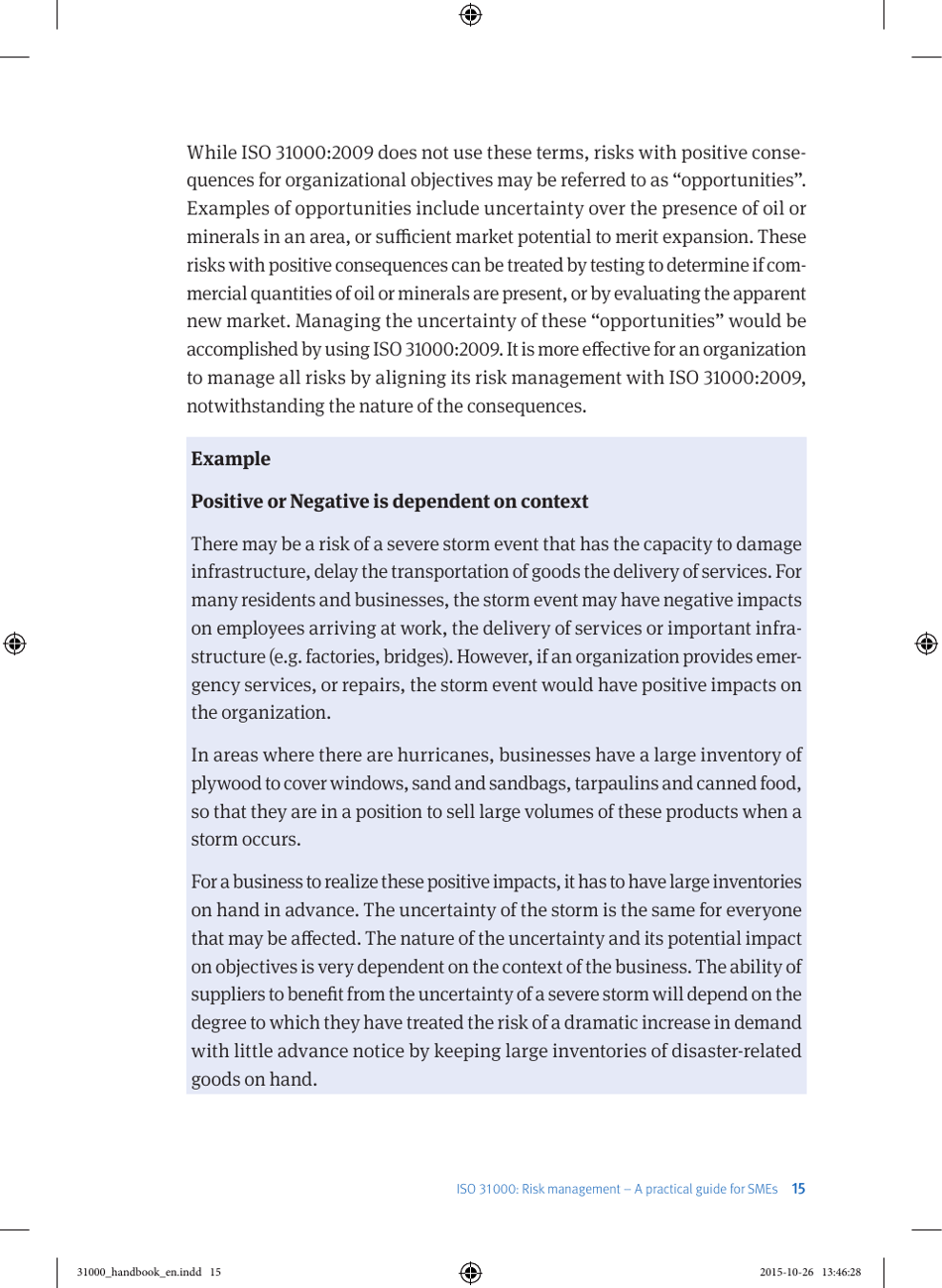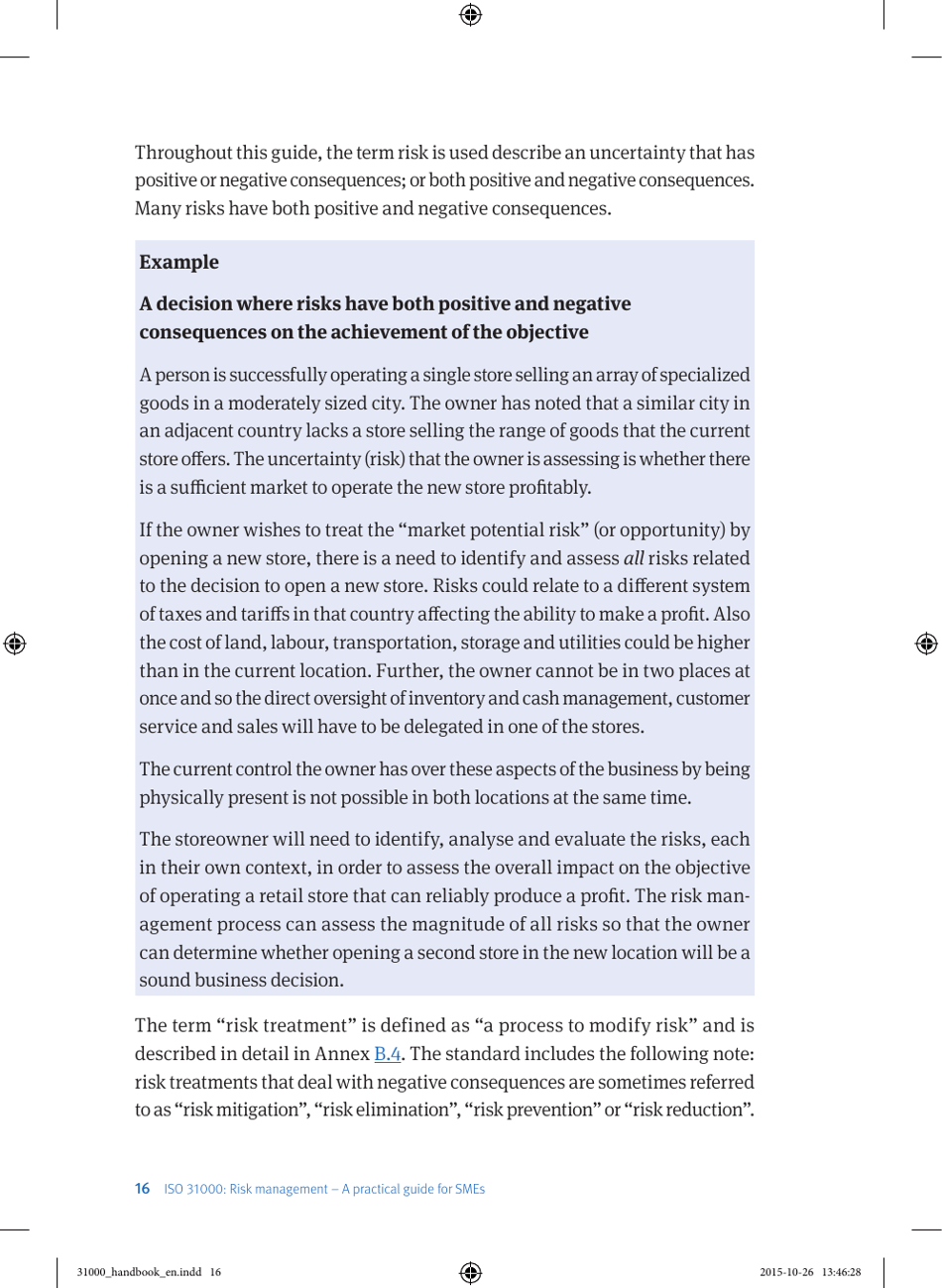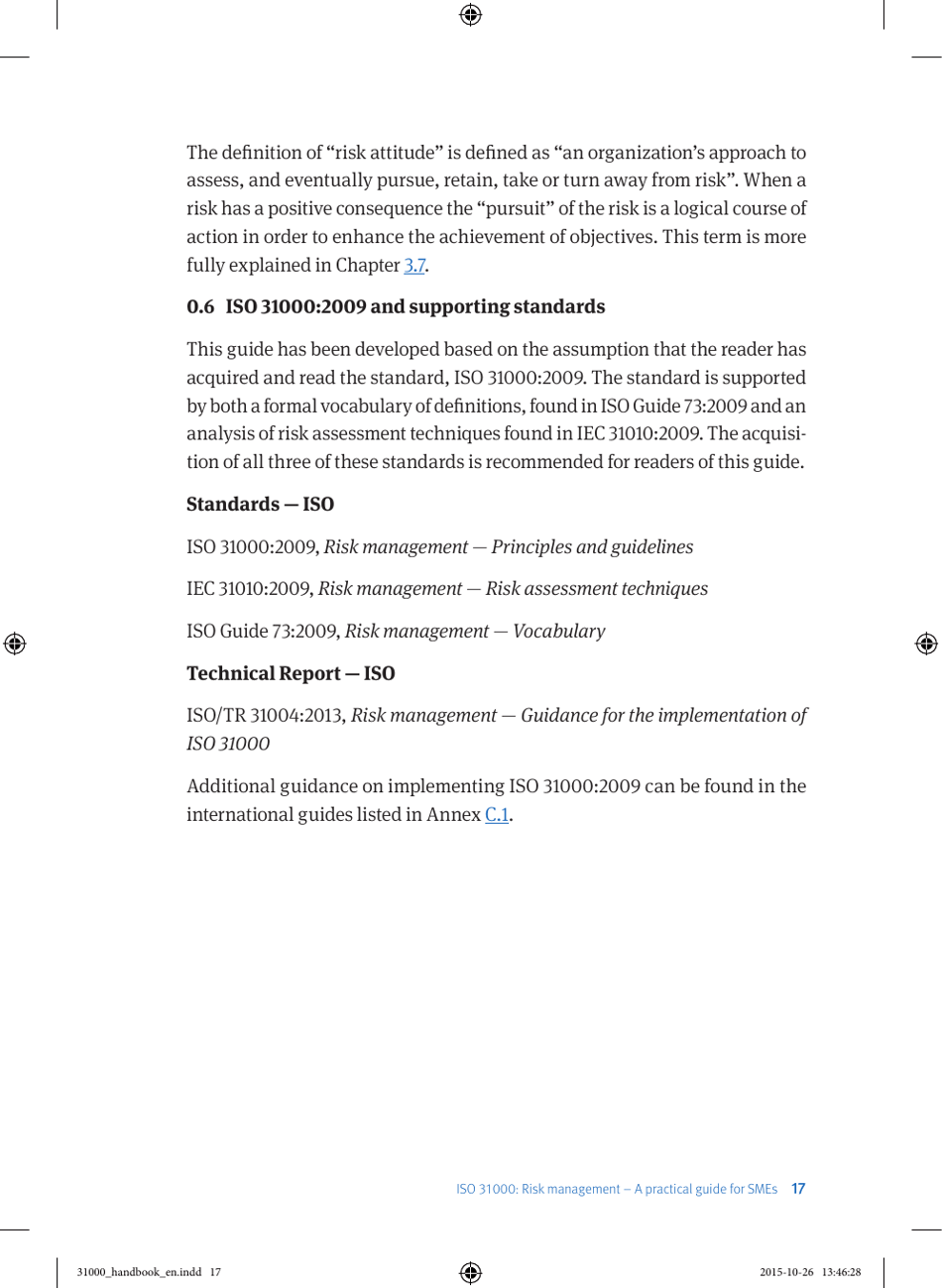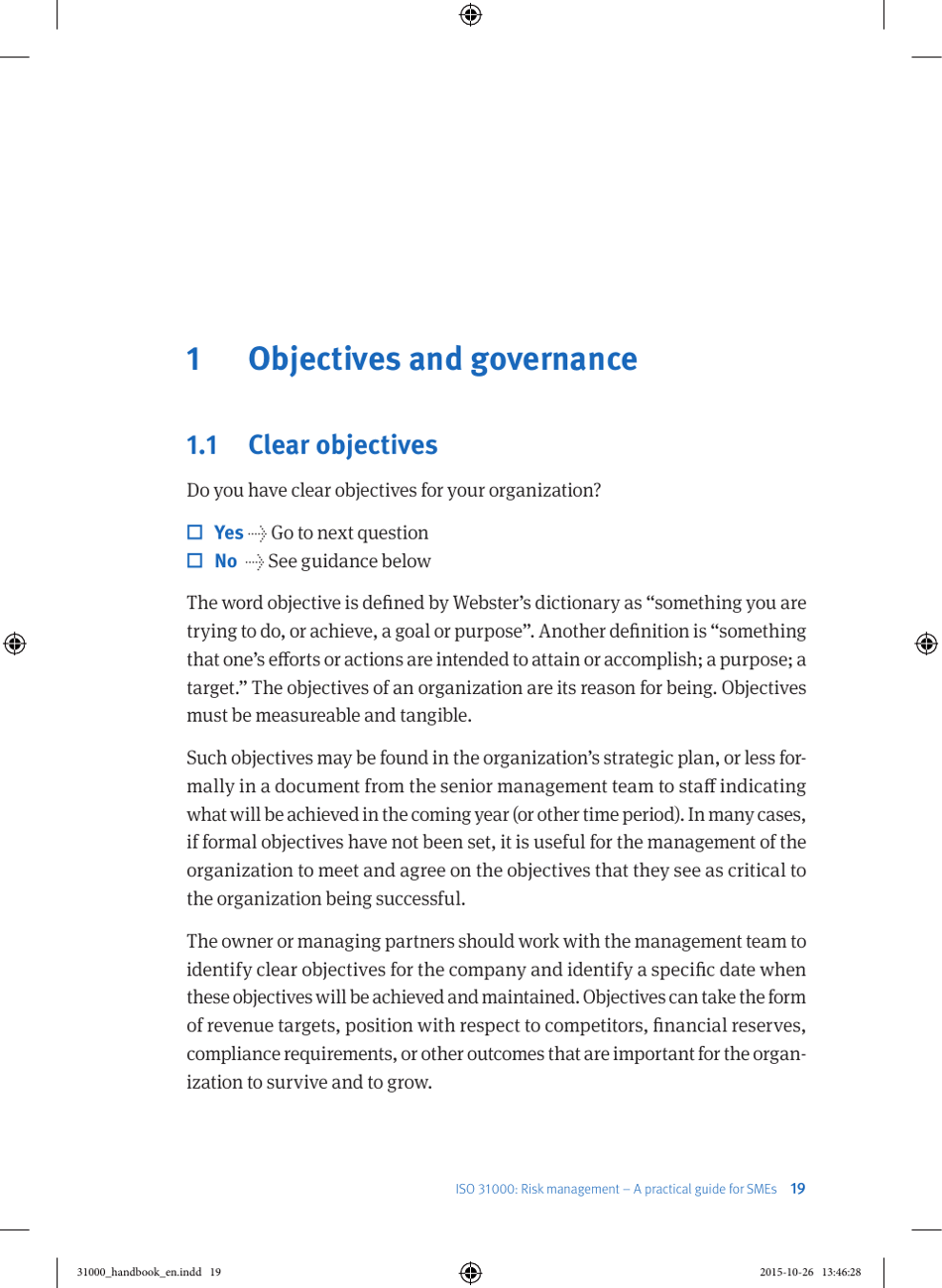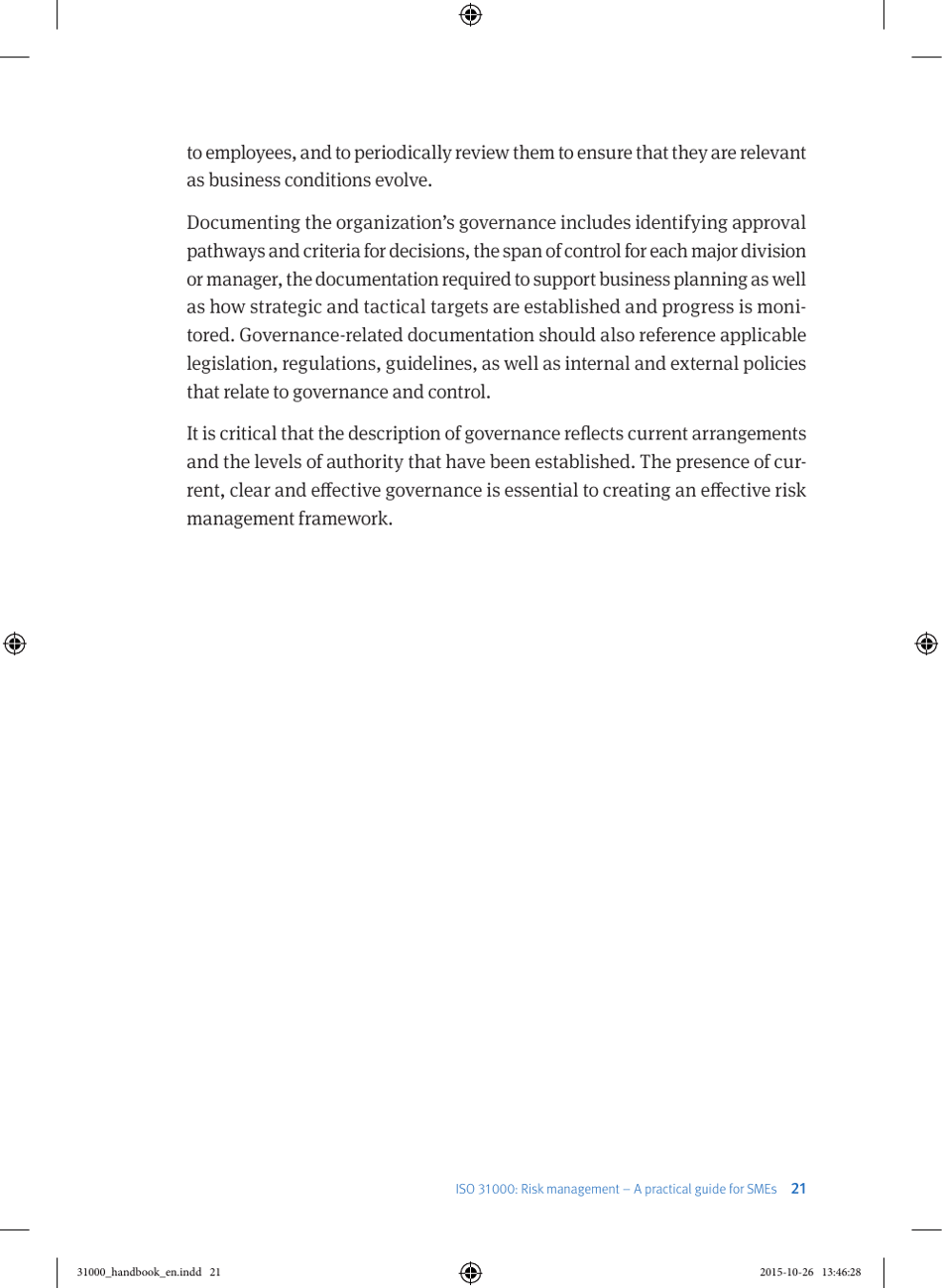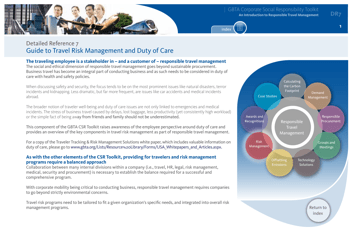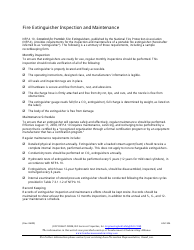Iso 31000 Risk Management - a Practical Guide for Smes
ISO 31000 is a risk management standard that provides guidelines for organizations, including small and medium-sized enterprises (SMEs), to effectively manage risks. It helps SMEs to identify, assess, and manage risks in order to make informed business decisions and ensure the achievement of objectives.
The ISO 31000 risk management standard is filed by the International Organization for Standardization (ISO). It is not specifically targeted towards any particular organization or SMEs.
FAQ
Q: What is ISO 31000?
A: ISO 31000 is a risk management standard.
Q: What does ISO 31000 provide?
A: ISO 31000 provides a practical guide for risk management.
Q: Who is ISO 31000 intended for?
A: ISO 31000 is intended for small and medium-sized enterprises (SMEs).
Q: What does the ISO 31000 guide cover?
A: The ISO 31000 guide covers principles, framework, and process for risk management.
Q: What is the purpose of ISO 31000?
A: The purpose of ISO 31000 is to help SMEs effectively manage risks.
Q: Why is risk management important?
A: Risk management is important to minimize potential losses and maximize opportunities for SMEs.
Q: What are the benefits of using ISO 31000?
A: The benefits of using ISO 31000 include improved decision-making, enhanced organizational resilience, and increased stakeholder confidence.
Q: How can SMEs implement ISO 31000?
A: SMEs can implement ISO 31000 by adopting the principles and processes described in the guide.
Q: Does ISO 31000 guarantee risk elimination?
A: No, ISO 31000 does not guarantee risk elimination, but it provides a systematic approach to identify, assess, and manage risks.

































